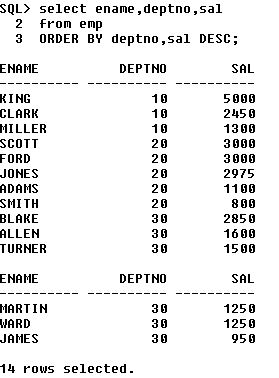- ROUND : Rounds values to specified decimal.
- TRUNC : Truncates value to specified decimal.
TRUNC(45.878,2) --------------------> 45.87
- MOD : Returns remainder of division.
MOD(1600,300) --------------------> 100
Example:
ROUND
The Round Function rounds the column, expression, or value to n decimal place.
If the second argument is 0 or is missing, the value is round to zero decimal place.
If the second argument is 2, the value is rounded to two decimal places.
If the second argument is -2, the value is rounded to two decimal places to the left.
TRUNC
The TRUNC function truncates the column, expression, or value to n decimal places.
If the second argument is 0 or is missing, the value is truncated to zero decimal places.
If the second argument is 2, the value is truncated to two decimal places.
If the second argument is -2, the value is truncated to two decimal places to the left.













